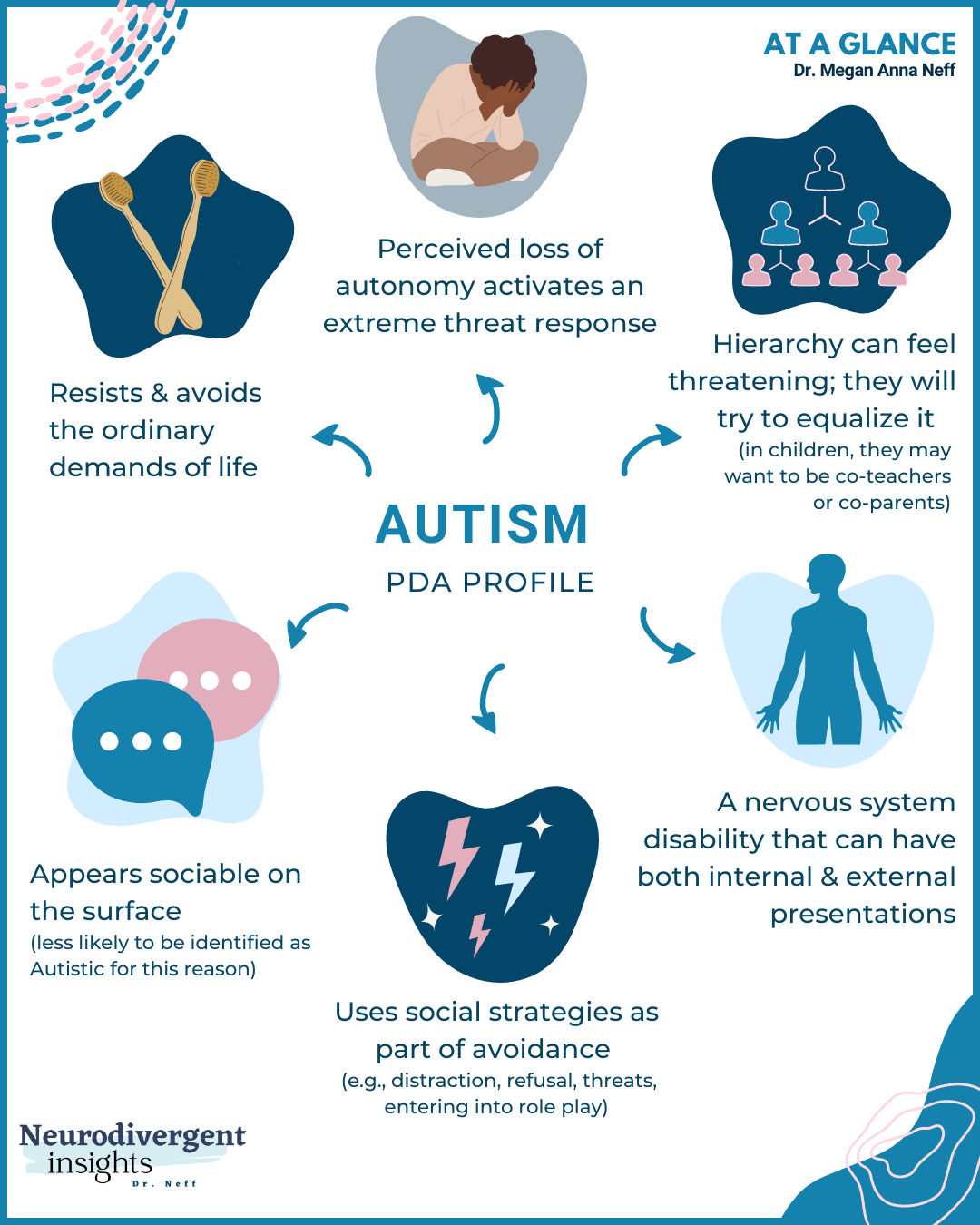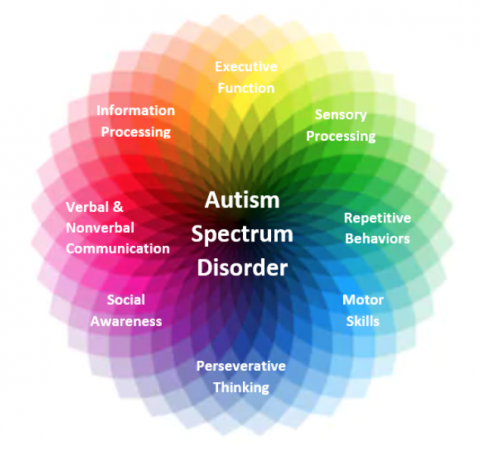How to Produce an Inclusive Atmosphere for Buddies and Household with Autism
Recognizing Autism: A Comprehensive Guide to Symptoms And Signs
Autism Range Disorder (ASD) incorporates a wide variety of attributes that can significantly impact an individual's social communications and daily performance. Understanding these nuances not only aids caretakers and educators in giving suitable assistance but likewise promotes a more inclusive atmosphere for individuals with ASD.
Introduction of Autism Range Problem
Defining Autism Range Problem (ASD) includes acknowledging it as an intricate neurodevelopmental problem defined by an array of difficulties in social interaction, interaction, and behavior patterns. The term "spectrum" mirrors the broad irregularity in signs and symptoms and their severity, which can differ dramatically from one person to another. ASD typically materializes in very early childhood years, although some people might not obtain a diagnosis up until later on in life.
Variables influencing the growth of ASD include hereditary proneness and ecological elements, although the specific reasons stay under investigation. Medical diagnosis usually relies on behavior evaluations, as there are no conclusive clinical tests for ASD. Early treatment is critical and can considerably improve end results, concentrating on enhancing interaction skills, social communications, and adaptive behaviors.
People with ASD may additionally display one-of-a-kind toughness, such as phenomenal interest to detail or specific locations of expertise. Understanding the multifaceted nature of ASD is vital for fostering an inclusive atmosphere that fits neurodiversity. Continued research is crucial for establishing reliable treatments and support group, allowing people with ASD to prosper and fulfill their potential within society.
Common Signs of Autism
Recognizing the typical indications of Autism Range Disorder (ASD) is essential for very early identification and intervention. These indicators can differ widely in severity and discussion, however certain features are often observed in people with ASD.
One of the most widespread indications is a significant difficulty in preserving and establishing eye call. People might likewise exhibit minimal interest in social communications and show a preference for solitary play.
Sensory level of sensitivities are also typical; people may underreact or panic to sensory stimulations, such as sounds, lights, or appearances. autism. Language development can be irregular, with some kids exhibiting postponed speech or using language in uncommon ways, consisting of echolalia-- duplicating sentences or phrases heard somewhere else
It is necessary to note that not every individual with ASD will certainly display all these indicators, and the level of these behaviors can vary dramatically. Early recognition enables for prompt support and sources, improving the lifestyle for those on the spectrum.
Social Interaction Obstacles
Social interaction challenges are a hallmark of Autism Spectrum Disorder (ASD), impacting a person's capability to involve successfully with others. These difficulties can show up in various means, including obstacles in starting and maintaining conversations, understanding social hints, and responding properly in social interactions.
Individuals with ASD might fight with nonverbal interaction, such as eye get in other touch with, face Continue expressions, and body language. This can bring about misunderstandings, as their communicative intent might not be correctly analyzed by others. They might find it hard to comprehend the subtleties of tone and context, which are important for reliable communication.
In group setups, people with ASD may feel overloaded and might not know exactly how to sign up with in discussions (autism). They might also display irregular conversational patterns, such as monologuing about particular rate of interests without identifying social reciprocity
Moreover, these difficulties can lead to social seclusion or troubles in forming connections, as peers may misunderstand their actions or interaction design. Recognizing these social communication challenges is important for promoting encouraging settings that advertise social abilities development and boost the top quality of interactions for people on the autism range.
Sensory Responses and sensitivities
Several people with Autism Spectrum Disorder (ASD) experience enhanced sensory level of sensitivities that can considerably impact their daily lives. An individual with ASD may find day-to-day noises, such as a vacuum cleanser or crowded atmospheres, overwhelmingly distressing, leading to stress and anxiety or meltdowns.
Sensory handling distinctions in individuals with ASD can additionally impact their ability to involve in regular activities and social interactions. As an example, a child that is sensitive to touch might withstand physical affection or stay clear of specific clothing materials. A choice for certain structures or tastes can limit nutritional options and develop challenges throughout nourishments.
Recognizing these sensory sensitivities is vital for identifying the one-of-a-kind experiences of individuals with ASD. Awareness of their sensory profiles can promote much better interaction and assistance approaches, creating an environment that accommodates their needs and enhances their lifestyle. Eventually, recognizing sensory level of sensitivities is an essential part of understanding the more comprehensive range of autism.

Sustaining Individuals With Autism
Efficient assistance for people with Autism Spectrum Condition (ASD) is critical for enhancing their general wellness and cultivating independence. Support methods should be tailored to satisfy the one-of-a-kind needs of each individual, considering their staminas and difficulties.

Social skills training can likewise play an essential duty. autism. Involving people in team tasks or role-playing scenarios can enhance their ability to navigate social interactions. Furthermore, it is important to enlighten member check my reference of the family, caretakers, and peers concerning ASD to foster a supportive and inclusive community
Conclusion
In conclusion, an extensive understanding of Autism Spectrum Disorder is important for acknowledging its indications and symptoms. Early identification of usual features, such as social interaction obstacles and sensory level of sensitivities, allows caregivers and teachers to apply reliable treatments. By promoting improved communication and social abilities, people with autism can navigate their environments more efficiently. Inevitably, enhanced awareness and support can dramatically improve the high quality of life for those affected by ASD.
Autism Spectrum Problem (ASD) includes a wide variety of characteristics that can dramatically affect an individual's social communications and daily performance.People with ASD might have a hard time with nonverbal interaction, such as eye get in touch with, face expressions, and body language.Numerous people with Autism Spectrum Condition (ASD) experience heightened sensory level of sensitivities that can significantly affect their day-to-day lives.Sensory processing distinctions in individuals with ASD can additionally affect their capability to involve in social interactions and regular activities.Recognizing these sensory sensitivities is vital for identifying the distinct experiences of people with ASD.